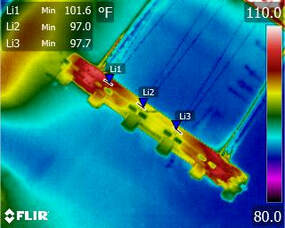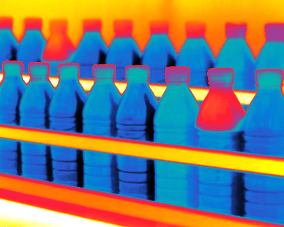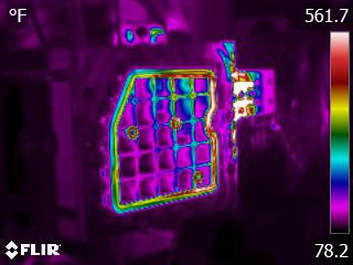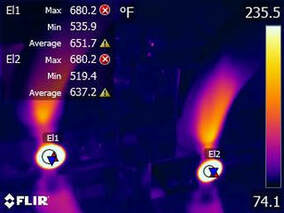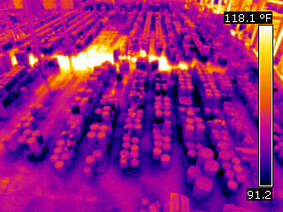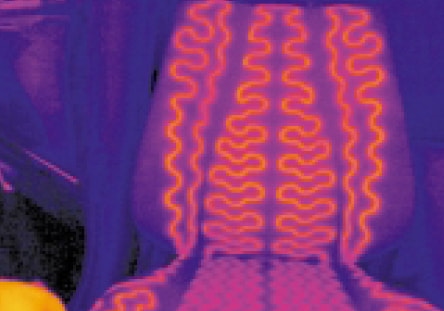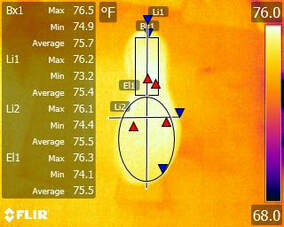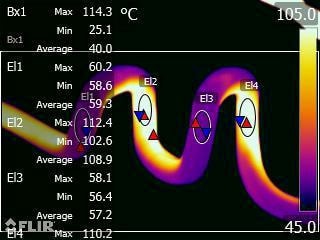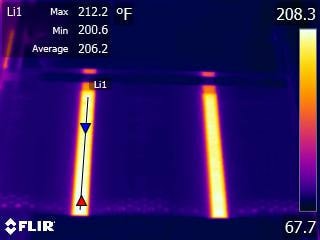Thermography Studies
Schedule a study and have our amazing staff work with you to find the best infrared solution for your industrial automation application. Our staff and partners consists of up to level 3 ITC Certified Thermographers. have a certified thermographer can come out to your facility and prove your concepts for you, establishing feasibility for retrofitting machines with automation equipment or assisting in the manufacturing process design for new machines. Ask us about what other solutions we integrate.
Infrared Thermal Imaging
Due to the fast heating rates of shortwave infrared emitters combined with their enormous power density levels, it is imperative that high-speed infrared imaging be used to capture true heat transients that would be missed by under-sampling. Utilize our on-site technical visits for heat analysis, profiling and engineering support.
Benefits of Infrared Imaging
– Radiometric temperature measurements on your materials to engineer ‘right-fit’ infrared emitters for your application
– Quality inspection for correct applied heat radiation
– Fine-tune your heating processes, applied heat and heat uniformity
Utilizing the latest technology from FLIR® systems, Emitted Energy applies a scientific approach to answer your thermal questions. Fully integrated thermal imaging and measurement solutions for applications such as: process development and optimization, industrial process monitoring, product verification, quality assurance, safety applications and more.
Technical Information
Infrared thermal imaging, or thermography, is the science of measuring temperature variations with a thermal camera. It is an imaging technique that converts the infrared energy of an object into an image that we can see, understand, and interpret, called a thermogram. This is possible because everything, living or inanimate, emits infrared radiation. Warm objects stand out well against colder backgrounds, and vice-versa. This technology is particularly useful for testing and thermal verification of object temperatures.
Thermal imaging cameras detect radiation in the form of infrared energy. This infrared radiation falls within the electromagnetic spectrum with a wavelength of about 1 to 15 microns. This puts infrared light before the visible light spectrum, and thus is not visible to the human eye. This is where special instruments, such as the thermal camera come into play. The images that the cameras produce are laced with radiometric data, which is why these images are vastly different from what we are used to seeing. The radiometric information contains the temperature readings for every pixel of the image that the camera produces. The camera assigns different colors, or shades of colors, to separate ranges of temperature. The result is the bright to dark image that we may use to interpret the surface temperature of the object.
Infrared thermal cameras provide a very accurate temperature reading of the object it is focused on. A very important aspect of this is setting the correct emissivity of the particular object. The emissivity of a material represents its ability to emit thermal radiation compared to that of a ‘black body’, which has a theoretical value of 1. Every material is different and the blacker and duller the object is the closer it is to an emissivity of 1. Thus the more reflective an object is, the lower its emissivity value is. Emissivity is a dimensionless value and often achieved by referring to a table.
The advantages of thermal imaging are as follows:
– Provides a visual picture of temperatures
– Provides a non-contact / non-destructive test method
– Can record temperature measurements of target objects
– Fast and accurate

